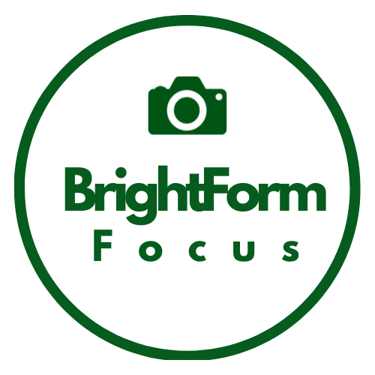DSLR vs Mirrorless: Which Should You Buy First?
Are you thinking about buying your first “real” camera and overwhelmed by the DSLR vs mirrorless debate? With the camera market evolving rapidly, and mirrorless models dominating store shelves, it’s never been more important for new photographers to understand the technical differences, the real-world pros and cons, and, most importantly, how these choices align with your practical needs, budget, and long-term goals. In this blog post, you’ll find everything you need to make an informed decision between DSLR and mirrorless cameras.
9/25/20257 min read

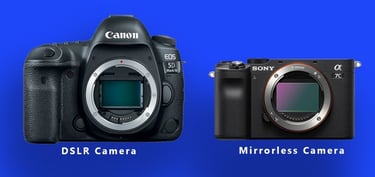
Understanding the Basics: DSLR vs Mirrorless
Before comparing features and prices, you need to know what sets DSLR and mirrorless cameras apart. While both support interchangeable lenses and offer far more creative control than smartphones or point-and-shoots, their core architectures are quite different.
DSLR vs Mirrorless
A DSLR (Digital Single-Lens Reflex) camera uses a reflex mirror mechanism to reflect light from the lens into an optical viewfinder. When you click the shutter, the mirror flips up, allowing light to hit the image sensor. This results in a real “through-the-lens” preview—what you see with your eye is exactly what the camera will capture, with zero lag. DSLRs are known for their rugged, ergonomic designs and tactile controls.
A mirrorless camera, as the name suggests, omits the mirror, allowing light to hit the image sensor directly at all times. The camera displays a digital, real-time preview on either the rear LCD screen or an electronic viewfinder (EVF). This design makes mirrorless bodies typically lighter, more compact, and better suited to video as well as rapid technological innovation.
Key Takeaway: DSLRs offer a traditional “through the lens” optical experience with longer battery life, while mirrorless cameras deliver the latest digital features in a smaller, more modern package. This doesn't necessarily mean the mirrorless cameras are better in every situation though.
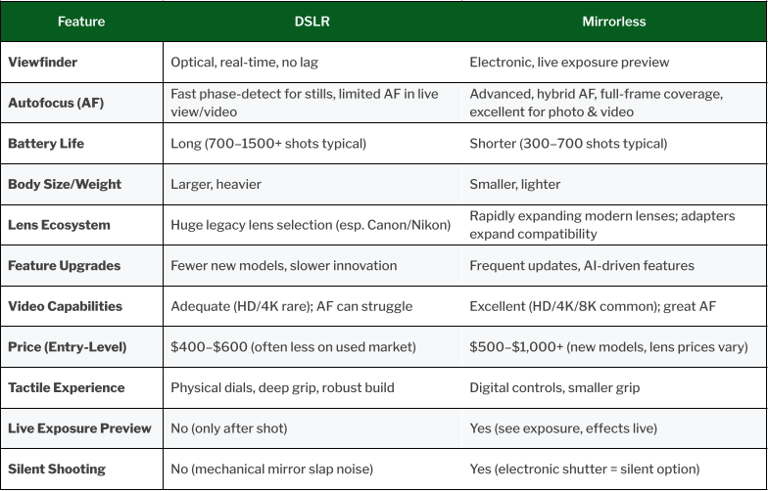

Pros and Cons: DSLRs for Beginners
Why Choose a DSLR as Your First Camera?
Pros:
Outstanding Battery Life: DSLRs conserve energy by using an optical viewfinder—1,000+ shots per charge is common, ideal for travel or all-day shoots.
Affordable and Robust: Entry-level DSLRs often cost less than equivalent mirrorless; older models (like Nikon D3500) are both cheap and rugged while still outputting good quality images.
Tactile Handling: Larger grips, intuitive physical controls, and a balanced feel—makes learning exposure triangle and setting adjustments easy and rewarding.
Vast Lens Selection: Decades’ worth of affordable, high-quality lenses (especially for Canon/Nikon) can be found new and used.
Great for Outdoor/Landscape: The classic optical viewfinder is bright even in direct sunlight; weather-sealed models available.
Learning Photography Fundamentals: Feature guides and “Guide Mode” (Nikon) help beginners master creative settings.
Strong Resale Value for Lenses: Even after you upgrade camera bodies, classic DSLR lenses retain much of their value.
Cons:
Bulk and Weight: Even entry-level DSLRs are chunkier than most mirrorless models; not ideal for small bags or hiking all day.
Older Tech: Very few new models released since 2020; most brands focus on mirrorless.
Video Limitations: Most beginner DSLRs max out at 1080p (Full HD); autofocus in video (and Live View mode) is much slower and less accurate than mirrorless.
Slower Burst Rates/AF Points: Cheaper DSLRs have fewer AF points (usually 9 or 11), clustered near the center—limiting tracking and action sequences.
No Live Exposure Preview: The optical finder can’t show you the effect of exposure settings (aperture, shutter, ISO) before the shot.
Quiet/Silent Shooting: Not possible—mirror mechanism always makes a “click”.
Real-World Use Cases:
Travel/wildlife/outdoor enthusiasts who want hours of shooting per battery.
Students learning manual photography who benefit from simple dials and an optical view.
Bargain-hunters needing maximum lens value on the used market.
Photographers who work in bright sunlight and need a reliable optical finder
Key Beginner Models:
Nikon D3500: Best value used; 24MP, 1,550-shot battery, Guide Mode, light and easy to grip.
Canon EOS Rebel SL3 / 250D: Lightest DSLR, 24MP, flip-out touchscreen, Guided Mode, 4K video (with crop).
Canon EOS Rebel T7 / 2000D: Ultra-affordable starter, easy menu, 24MP, logical controls, huge lens selection.
Nikon D7500: More features, articulating touchscreen, 51-point AF, strong for progression and lasting a long time.
Pentax KF / K-70: Rugged, weather-sealed option for landscape/adventure shooters.
Pros and Cons: Mirrorless for Beginners
Why Choose a Mirrorless Camera First?
Pros:
Lightweight, Compact Bodies: Perfect for travel, street, or vloggers who want portability without sacrificing image quality.
Live Exposure Preview/EVF: Instantly see the effect of aperture, ISO, white balance before taking the shot, fewer mistakes and faster learning.
Fast, Accurate Autofocus: Modern mirrorless models have AF points covering nearly the whole frame, with eye/face/subject tracking which are ideal for portraits, kids, pets, fast action, and video.
Superior for Video: 4K (and even 8K) video is standard; autofocus in video is smooth, accurate, and reliable.
Silent Shooting Option: Electronic shutter enables completely silent operation—great for weddings, ceremonies, or candid street photography.
Rapid Fire/Burst Rates: Advanced mirrorless models shoot at 10fps, 20fps, or more—crucial for action and sports.
In-Body Image Stabilization (IBIS): Common in mirrorless, rare in DSLRs. Helps you get sharp handheld shots or silky-smooth video.
Cutting Edge Features: Features like focus peaking, zebra warnings, in-camera filters, and easy Wi-Fi file transfer are everywhere.
Forward-Looking Support: Brands now release new lenses and updates only for their mirrorless mounts.
Cons:
Shorter Battery Life: Most entry-level mirrorless cameras manage 300–500 shots per charge; expect to carry extra spares.
Electronic Viewfinder/Screen Burnout: Constant screen/EVF use can be tiring on the eyes; some prefer the “feel” of a real optical finder.
Smaller Grip/Ergonomics: Tiny bodies can feel cramped with large lenses or big hands (many full-frame models are now as chunky as DSLRs).
Lens System Newer/Expensive: The best native lenses for mirrorless mounts are recent, pricier, and selection is smaller compared to decades of used DSLR lenses. Some systems still filling out essential options (especially Canon/Nikon).
Sensor Dust Risk: With no mirror covering the sensor, it can attract dust more easily when changing lenses—careful technique is key.
RAW Buffer/Write Speed: A few models have smaller buffer depths, especially in budget lines—relevant for continuous sports/action shooters.
Camera Price: Base body price is often similar, but lens costs may be higher—especially for fast zooms and primes.
Real-World Use Cases:
Vloggers, YouTubers, and social creators: Flip-out screens, 4K video, fast AF make mirrorless the obvious choice.
Street, travel, or content creators who value lightweight gear over all else.
Families or pet owners: Face/eye detection works magic with unpredictable subjects.
Hybrid shooters: Anyone wanting both top-tier stills and pro-quality video.
Tech enthusiasts: Those eager for the latest features and firmware support.
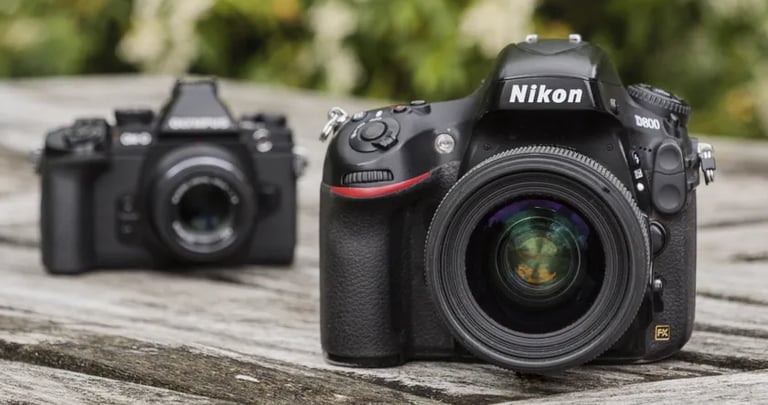

Key Beginner Models:
Canon EOS R50: 24MP, Dual Pixel AF, excellent auto modes, flip touchscreen, great for vlogs and photos.
Sony α6400 / α6100 / ZV-E10: 24MP, lightning-fast hybrid AF, huge lens support, ZV-E10 is made for video and vlogging.
Nikon Z30: Especially good for creators/vloggers. It has a flip-out selfie screen, decent video features, and is pretty portable.
Fujifilm X-M5: Film simulation filters, beautiful JPEGs out of camera, stylish retro design, versatile lens lineup.
Panasonic Lumix G7: Great for travel and vloggers, Micro Four Thirds system means small lens options. More budget/entry-level.
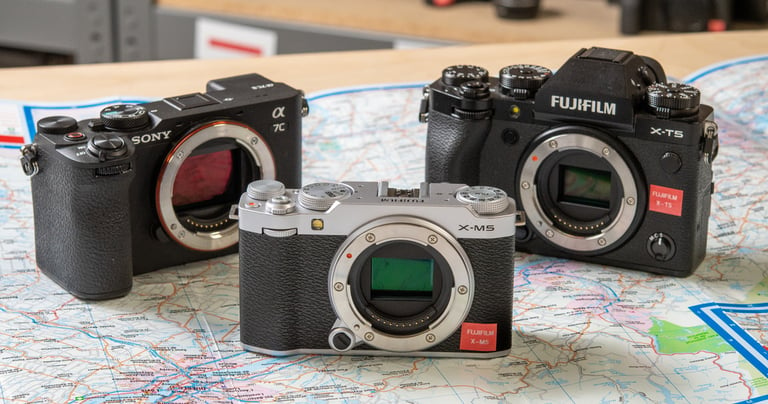

In Practice: Real-World Use Comparisons
Event Photography
DSLR: Long battery life means you can shoot an entire wedding day or event without swapping batteries. The optical viewfinder also performs well in dimly lit venues, giving you a clear, lag-free view of the action.
Mirrorless: Silent shooting is a huge advantage—you can capture vows or quiet concert moments without the distracting click. Eye-detection autofocus better ensures sharp portraits even when subjects are moving unpredictably.
Travel and Street Photography
DSLR: The bulk and weight can turn into a burden when you’re walking all day or trying to stay discreet in crowded streets. However, the rugged build is reassuring and safer if you’re trekking through dust, rain, or extreme conditions.
Mirrorless: Compact size makes it easier to carry everywhere, which often means you’ll actually take it out more. The ability to preview exposure in real time helps when shooting quickly in changing light. However, it may require carrying an extra battery with a mirrorless's more restrictive battery life.
Wildlife and Sports
DSLR: Historically the go-to for professionals thanks to fast burst rates, long battery life, and access to super-telephoto lenses. Many wildlife shooters still swear by them.
Mirrorless: Modern models now rival or surpass DSLRs in burst speed and autofocus tracking. Features like animal-eye detection can lock onto a bird in flight or a sprinting athlete with uncanny accuracy.
Content Creation and Video
DSLR: Capable of solid video, but autofocus in live view is often sluggish. Limited video-centric features compared to newer systems.
Mirrorless: Built with hybrid creators in mind. 4K/8K video, in-body stabilization, and continuous autofocus make them the clear choice for vloggers, YouTubers, and filmmakers.
Everyday Life
DSLR: Great for capturing birthdays, school events, or sports games, but the size may discourage casual use.
Mirrorless: Easier to grab and go, with smart autofocus that makes it simple to capture kids or pets who never sit still.
Final Verdict
DSLRs excel when endurance, ruggedness/durability, and optical clarity matter most. Mirrorless cameras have a better performance in versatility, portability, and cutting-edge features that make capturing fleeting moments easier. In practice, both can deliver stunning results, but the one you’ll actually carry and enjoy using is the one that will make you a better photographer. If you are more interested in a large category of available lenses for much cheaper prices than DSLRs are for you, but if you care more about advanced camera features such as autofocus and photo previews then you'll want to go with mirrorless. Each camera type are efficient in different ways for specific tasks, but if you were interested in starting fresh are picking a camera that fits well for most general situations than the mirrorless would be a good choice for you. Our personal choice for an all around great beginner mirrorless camera that will last for years is the Canon EOS R50. It can deliver pro-level features in a compact, affordable camera. That being said, DSLRs still have real-world advantages. It is important to do some research to determine which camera is going to be best for you and hopefully this has helped you to make a more informed decision.
Learn
Explore tips and techniques for photography.
Affiliate Disclosure
Some of these post/pages contain affiliate links. As an Amazon Associate and other retailers such as B&H Photo and Video I may earn from qualifying purchases. I only recommend gear and resources that I personally use, have tested, or truly believe in. Any support you give by purchasing through these links helps allows me to continue creating free content. Thank you!
Connect
Support
contact@brightformfocus.com
© 2025. All rights reserved.
